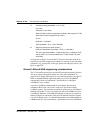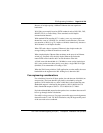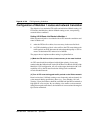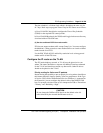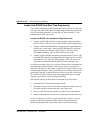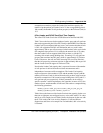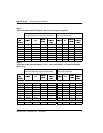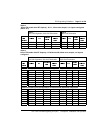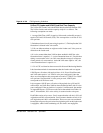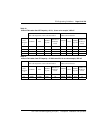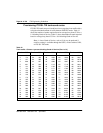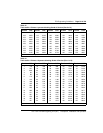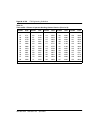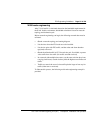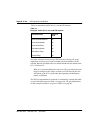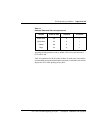
Page 92 of
378
ITG Engineering Guidelines
553-3001-202 Standard 1.00 April 2000
24-Port ITG Leader and DCHIP Card Real Time Capacit
y
The 24-Port ITG Trunk Card is the NT0961 based on the Intel Pentium CPU.
The 24-Port Leader card real time capacity analysis is as follows. The
following assumptions are made:
1. Average Hold Time (AHT) is equal to 180 seconds, and traffic per port is
equal to 28 Centi Call Seconds (CCS). This corresponds to a call rate of 15.6
calls per hour.
2. Peakedness factor for call processing is equal to 1.3. This implies that 30%
fluctuation is allowed in the voice traffic.
3. Calls can either terminate or originate on the Leader card. Voice ports are
allowed on the Leader card.
4. It is also assumed that when VAD has been enabled in MAT, the voice
fluctuation factor is equal to 1.5. A voice fluctuation factor of 1.5 implies that
during a conversation voice is on 50% more than the average (in contrast to
silence periods of a conversation). And with VAD status equal to “off”, the
voice fluctuation factor is equal to 1.1.
5. 15% of CPU real time has been reserved for Network Monitoring Module.
It has been determined via measurements that the Leader card can support
1920 IP ports, all codecs with payload sizes of 10, 20 and 30 milliseconds,
and VAD status equal to “on” with 24 voice ports configured. Under the
above set of assumptions, this corresponds to a total of 53,760 CCS, or 29,867
calls per hour. Note that with 24 voice ports per card, 1920 IP ports
corresponds to 80 Follower cards.
It also supports 1920 IP ports, all codecs with payload sizes of 20 and 30
milliseconds, and VAD when VAD has been disabled in MAT with 24 voice
ports configured. If the payload size is equal to 10 milliseconds, the number
of supported IP ports, or Follower cards can be determined from Tables 10
and 11. In both tables, 50% voice activity is assumed on the voice ports.
Each Table consists of two cases. Case I assumes that the call mix is 50% call
origination and 50% call termination. Case II assumes that the call mix is 0%
call origination and 100% call termination. These two cases are considered
because the call processing assist time for originating calls on the Leader card
is negligible, while for the terminating call, this time is non-negligible.



